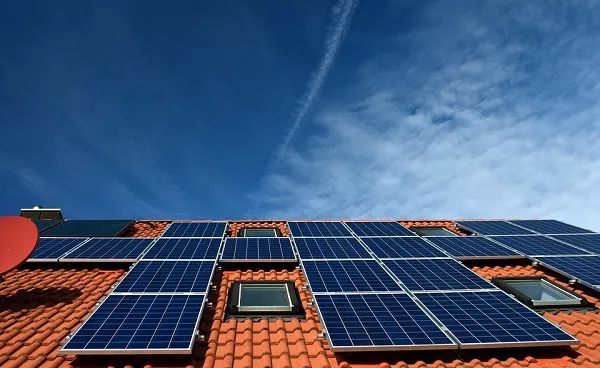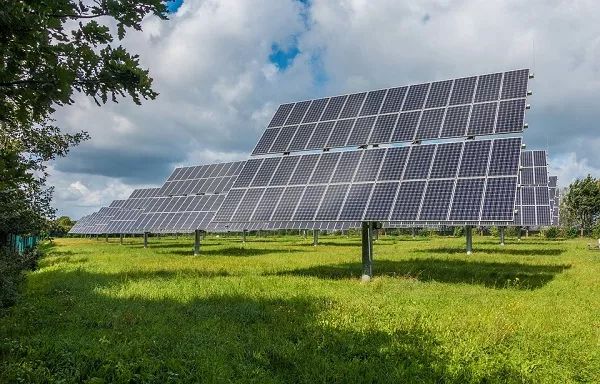Do You Know the Three Highlights of the New Distributed Generation Management Measures?
Key Points: The newly released Distributed Generation Management Measures (effective March 30) clarify two critical industry concerns:
No Capacity Quotas for Rooftop PV – Industrial/commercial rooftop distributed projects remain exempt from scale restrictions, ensuring long-term growth.
Definition Unchanged – Previous rumors about redefining distributed projects were unsubstantiated.
Key Revisions vs. Previous Policy:
Market Mechanisms: Enhanced provisions for direct power trading and ancillary services participation.
Grid Compliance: Stricter technical standards for voltage regulation and frequency response.
Subsidy Transition: Gradual shift from feed-in tariffs to market-based pricing (2025–2030 phaseout).

Highlight 1: Unlimited Scale for Distributed PV?
Previously, China's National Energy Administration (NEA) exempted distributed PV projects, village-level poverty alleviation power stations, and inter-provincial transmission corridor PV projects from capacity restrictions under the *13th Five-Year Plan for Renewable Energy Development*.
Recent industry speculation suggested the new Measures would impose quota controls on non-residential (e.g., industrial/commercial) distributed PV to curb expansion—a move analysts attributed to mounting subsidy arrears. However, the finalized policy maintains the exemption, ensuring continued growth for rooftop distributed PV.
Key Implications:
Policy Continuity: No quota system for distributed PV preserves market stability.
Subsidy Pressure: Unchanged rules may exacerbate existing subsidy delays (current backlog: ~$15 billion).
Sector Focus: Residential projects remain prioritized; commercial projects face closer grid oversight.

Highlight 1: Continued Exclusion from Capacity Quotas Boosts Distributed PV
Despite rapid growth in residential PV last year, commercial/industrial (C&I) rooftops dominated 2017's 20GW distributed capacity additions. Including C&I projects under quota management would have severely restricted development. The finalized Measures maintain quota exemptions, sustaining market growth.
Note: While no explicit quotas exist, strengthened planning requirements may indirectly limit deployment:
Provincial governments must integrate distributed generation into regional energy plans
Grid companies must formulate dedicated interconnection plans
Projects may face de facto queues during grid connection, mimicking quota effects
Highlight 2: Market-Driven Trading Mechanism
The Measures advance electricity market reforms by enabling:
Direct Local Power Sales – Distributed generators can trade with nearby users
Grid as Transmission Agent – Utilities facilitate delivery via distribution networks
Pilot Expansion – Priority given to high-demand zones (industrial parks, new towns) with:
Strong renewable resources
Favorable grid conditions
Significant consumption potential
Key Implications:
2018 Pilot Targets: Regions already meeting ≥50% local consumption thresholds
Pricing: Market-based with grid fee caps (0.1-0.3 RMB/kWh proposed)
Risk: Potential curtailment if trading volume exceeds local demand

Highlight 3: Enhanced Emphasis on O&M Management
The new Measures significantly strengthen requirements for distributed PV post-construction operation and maintenance (O&M), with key provisions:
Article 26:
Provincial energy authorities must establish monitoring, statistics, and information disclosure systems for distributed generation.
Grid companies or third-party O&M providers may be commissioned for data collection.
Obligation: All project owners (including households) must provide operational data.
Article 27:
Investors must implement formal O&M systems (self-managed or via third parties).
Universal Compliance: Even residential systems must meet technical standards and participate in grid-coordinated maintenance.
Accountability: Third-party O&M providers share liability for system reliability.
Implementation Gaps & Outlook:
Pilot Delays: Market trading trials (originally Feb 2018 start) now face a July 2018 deadline, potentially pushing nationwide rollout to 2019.
O&M Enforcement: While rules are clear, enforcement mechanisms (e.g., penalties for non-compliance) remain unspecified.
Industry Shift: Mandatory professional O&M could raise costs by 0.03-0.05 RMB/W but reduce downtime losses by ~15%.

Policy Focus on O&M Standardization
The two provisions mandate systematic operational management for distributed PV projects:
Real-Time Monitoring
Grid operators/third-party O&M providers must implement per-project data tracking platforms covering generation, faults, and maintenance records.
Example: Anhui Province’s pilot requires 5-minute interval data reporting for projects >500kW.
Standardized Protocols
Equipment inspection frequencies (e.g., inverters: quarterly)
Response timelines for faults (e.g., <4 hours for critical issues)
Unified technical guidelines will govern user-investor-O&M provider collaboration, including:
Targets 25-year system availability ≥98% for subsidized projects.
Market Implications
O&M Sector Growth: China’s distributed PV O&M market is projected to reach ¥12.6 billion by 2025 (CAGR 28%).
Regulatory Momentum: The NEA is drafting:
Distributed PV O&M Technical Specifications (expected 2019 Q1)
Third-Party O&M Service Standards (expected 2019 H2)
Critical Need
Current industry pain points—like inconsistent rooftop access rights and unqualified rural O&M teams—highlight urgency for these standards to ensure 20+ year project viability.